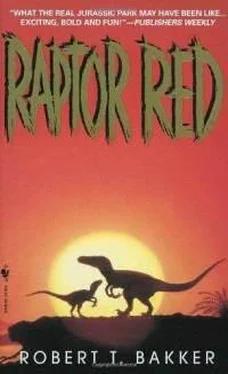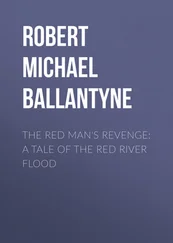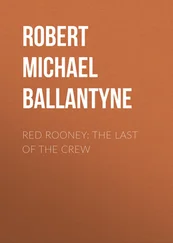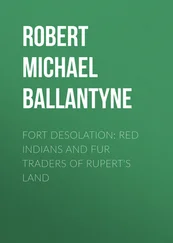This book is the story of Utahraptor, told through the experiences of an individual raptor, a young adult female. Her story is pieced together from the fossil remains of Utahraptor and from clues about her world locked up in Early Cretaceous sediments.
Bones and rocks are eloquent storytellers, if you know how to listen to them. When you pick up a raptor shin-bone, you can feel the rough textured zones that mark the attachment sites of the muscles that gave power to the leg when it was part of a living animal. You can run your finger around the smooth surfaces at the upper and lower ends of the bone - the areas that formed the joints and that allowed quick, controlled movement.
Bones, muscles, and joints tell us much about the life and times of the superraptor from Utah - and we can learn even more from living species who have raptor characteristics today. Dinosaurs weren’t the slow, stupid, overgrown lizards that museum displays showed in the 1950s. AH dinosaurs show at least some of the adaptive hallmarks of the bird class. Raptors are especially close. In all details of their body construction - hips, knees, ankles, feet and hands, eyes and brain - raptors are designed like ground-running superhawks.
If you want to imagine the courtship behavior of Utahraptors or how they raised their young, don’t think lizard - think bird.
The rocks of Utah are full of clues as to what sort of landscape played host to Utahraptor. Fossils of water-loving turtles, crocs, and clams map out the size of rivers and ponds and swamps of the Early Cretaceous. Petrified tree trunks and shale beds with leaf imprints give snapshots of the flora. The very same sand beds and floodplain silts that entomb Utahraptor bones tell offloads that covered the lowlands during spring rainy seasons and of terrible droughts that turned lakes into briny salt flats.
Even such lowly creatures as earthworms and beetle grubs, the subterranean supporting cast of landscape evolution, left behind fossilized burrows that show up as bright green zones in the brown and red mud rock. When you sit in a dinosaur quarry in Utah, taking a break from chiseling out raptor bones, you can almost hear the gentle rustling of Cretaceous soil creatures, churning around the tangled roots of conifer seedlings.
We can learn from Utahraptor’s story. Hers was a beautifully alert and sentient species. By looking through her eyes, we can see the evolutionary forces that were changing the natural world during the Early Cretaceous. Our own human ancestors were being created by the invisible hand of natural selection, as were the beginnings of the other animals and plants that enjoy supremacy in today’s world. Utahraptor’s story is part of our story.
The story begins with an invasion, an ambush, and a death.
The time is a hundred and twenty million years ago. On the flat, featureless flood plains that were central Utah, an evolutionary event is about to occur that will shock the ecological community of dinosaurs. The event is the arrival of a new superpredator.
A pair of fierce but beautiful eyes look out from the dull green undergrowth of conifers and ferns that bound the edges of mud flats and riverbeds. The eyes follow every movement among the great herd of plant-eating dinosaurs that mills around in the open meadows, feeding high in the trees, and sniffing the air for danger. The eyes belong to a young adult Utahraptor, a female who has not yet reproduced.
The female Utahraptor moves her twenty-foot-long body quietly through the ferns, walking in long, slow strides on her muscular hindlegs. She stops every few steps, rotates her elongate head, surveys the plant-eaters. Her eyes move back and forth, executing the rapid scanning of a hunter who is thinking about everything she sees. She is an intelligent killer. She watches the pattern made by the huge herbivorous dinosaurs. She evaluates each individual as a potential victim.
If she could put her thoughts into a human language, they might be: That cow over there is too alert -she travels with two near full-grown calves. They’re too strong, too dangerous to attack.
And that young bull is part of a bachelor-pack, five adolescent males who are aggressive and inquisitive. We can’t kill them today.
The Utahraptor moves her muzzle slightly to the left. She searches the treeline for another pair of eyes.
There! She exhales in a short, barely audible grunt. Her eyes meet those of another Utahraptor, a young male. He has the same stocky, compact torso she has, the same long, low head, the same neck held in an S-curve, the same long arms and fingers tipped with cruel-looking claws.
She is half of a mated pair, locked together in Darwinian monogamy for the last six months. Their mutual attraction is evolution’s way of giving both male and female the best possible chance to get their genes into the next Utahraptor generations. In nature, nothing else matters.
As the days have lengthened in the early spring, the female Utahraptor has been responding to a powerful shift in her own internal chemistry. During the winter she was hunting for herself and for her mate. But now, subconsciously, she’s aware of a new responsibility. She is hunting for the next generation. Soon they must build a nest and they must raise chicks.
The female and male exchange glances again, and she nods to him. It’s a message that means, In the next few minutes our lives will depend upon each other. I’m with you.
The raptor pair-bond is held together by these shared risks. If they’re efficient as a pair - and lucky - they’ll be uninjured and well fed at the breeding season. Then and only then will there be a brief interval for copulation.
This is the most dangerous season for raptors. Mating and rearing young exposes both parents to the highest risk of injury and death they’ll face all year. Hunting alone isn’t good enough. A pair of raptors hunting together is four or five times more successful than a solitary predator.
The raptor pair have another reason to be anxious. They are newcomers to the Utah ecosystem, an immigrant species whose original home is thousands of miles away in northern Asia. The native prey species of North America have strange habits and may be equipped with defenses the new predators have never seen.
The female Utahraptor sniffs the dung heaps left by the plant-eaters at the edge of the treeline. She’s searching for identification chemicals, clues to the nature of the animals she and her mate are stalking. She’s reluctant to risk an attack on a herbivore whom she has never met. But she’s optimistic today - the dung-aroma seems familiar.
She has learned that she and her mate often have the advantage in the new land - sometimes the native prey species haven’t had time to evolve special countermeasures against the foreign hunters. Invading predators may hit new territory like a Darwinian blitzkrieg.
The female raptor sticks her narrow snout out between the dried fronds of a tree fern. The dull brown-red hue of the fronds matches her own body color. She sniffs the air, testing the prey’s chemical signature - she trusts identification by smell more than by sight.
I know this one. We’ve hunted it before. We can do it if we’re careful. Her thought processes click through her predatory options. She knows her mate is smart. She trusts that he knows what she knows.
There. That one. That bull acting alone, bullying the cows. He’s not paying attention - we can kill him. The female raptor silently selects the target, wordlessly evaluating the bull’s vulnerability.
Her thigh muscles begin to twitch. It’s almost time. They’re almost close enough.
She pauses one last time, sitting up inside a clump of tall tree ferns. She looks back again at her mate. They’re too close to their prey to exchange nods, but just looking at each other is reassurance enough.
Читать дальше












